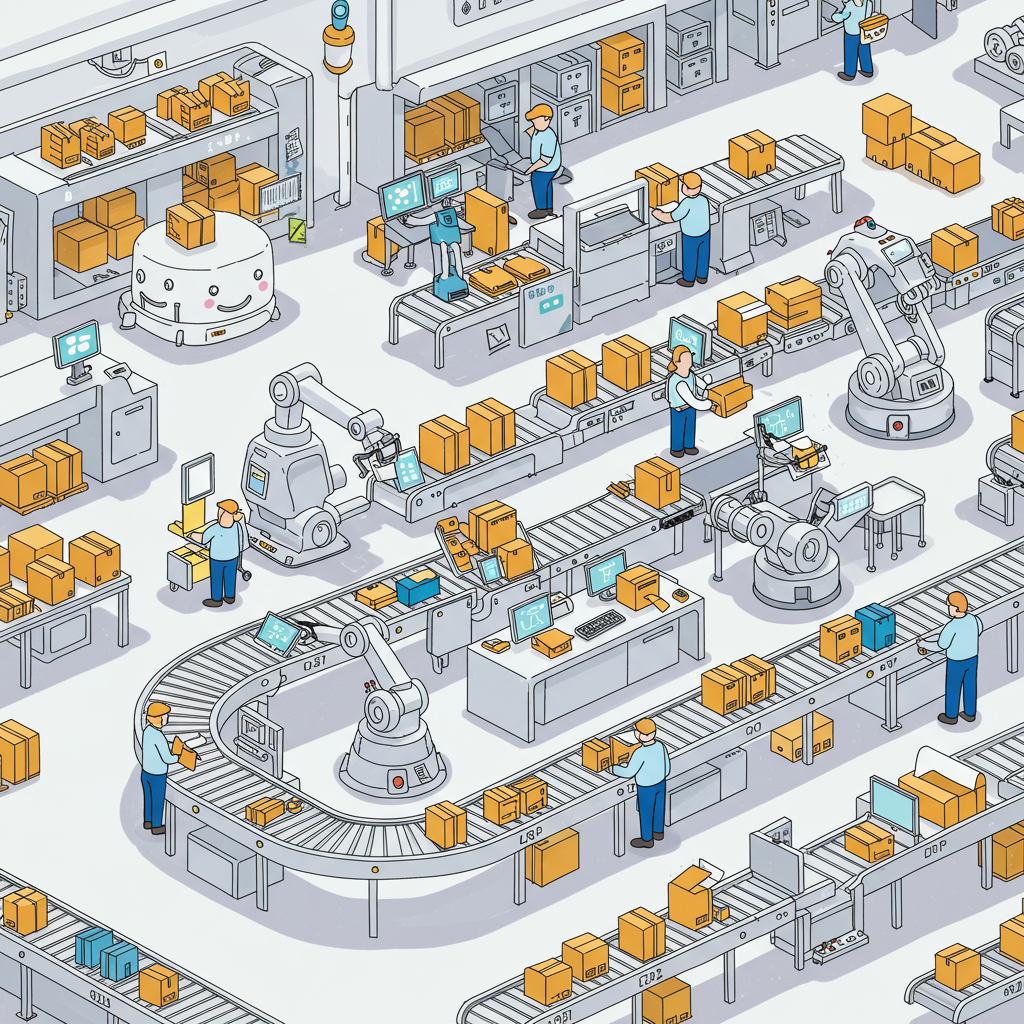Discover how I transformed my Shopify operations by automating order fulfillment, saving time, reducing errors, and scaling my business effortlessly.
As a Shopify merchant, I know the grind. Fulfilling orders manually can quickly become a bottleneck, especially as your business grows. It’s a time-consuming, error-prone process that can eat into your profits and customer satisfaction.
That’s where fulfillment automation comes in. It’s about leveraging technology to streamline and execute various tasks involved in getting an order from your store to your customer’s doorstep, with minimal human intervention.
For me, the biggest win from automation is reclaiming time. Instead of spending hours printing labels, updating inventory, and sending tracking emails, I can focus on strategy, marketing, and product development.
Automation drastically reduces human error. No more mislabeled packages, incorrect addresses, or forgotten tracking numbers. This leads to fewer customer complaints and returns, which is a huge relief.
Imagine scaling your business without having to hire a new fulfillment team member for every 10 new orders. Automation allows you to handle increased volume seamlessly, making growth much less stressful and more manageable.
While there might be an initial investment in tools, the long-term savings are significant. Reduced labor costs, fewer shipping errors, and optimized shipping rates all contribute to a healthier bottom line for your business.
Faster, more accurate fulfillment directly translates to happier customers. They receive their orders quickly and without hassle, building trust and encouraging repeat business, which is invaluable for any e-commerce store.
Let’s break down the key areas where you can automate. First, order processing. Automation can automatically mark orders as paid, send confirmation emails, and even flag suspicious orders for review, saving you manual checks.
Keeping track of stock levels is crucial. Automated systems can update inventory in real-time, prevent overselling, and even trigger reorder alerts when stock runs low, ensuring you never miss a sale due to stockouts.
Manually creating shipping labels is incredibly tedious. Automation can pull order details and generate labels with the correct shipping method and address, ready for printing, often in bulk.
Some advanced systems can even compare shipping rates across multiple carriers and select the most cost-effective or fastest option based on predefined rules you set, optimizing your shipping costs.
Once an order ships, customers want to know where it is. Automated systems can send tracking numbers and updates directly to customers, significantly reducing the number of ‘Where’s my order?’ inquiries you receive.
While not strictly fulfillment, automating parts of the returns process (like generating return labels or initiating refunds based on conditions) can also save a lot of time and improve customer experience.
Shopify itself offers some basic automation features. You can set up automatic order archiving, send abandoned cart reminders, and manage basic inventory directly within your admin panel.
For more complex rules, Shopify Flow is a powerful tool. It allows you to create custom workflows based on triggers and actions. For example, ‘When an order is placed for product X, tag it as ‘fragile’ and notify warehouse team.’
The Shopify App Store is a treasure trove for automation. Apps like ShipStation, ShippingEasy, or Order Printer Pro can significantly enhance your automation capabilities for shipping and label generation, integrating seamlessly.
For more robust inventory automation, consider apps like Stocky (Shopify’s own), TradeGecko, or Katana. They offer advanced features like multi-location tracking, forecasting, and supplier management, taking your inventory control to the next level.
For ultimate hands-off fulfillment, partnering with a Third-Party Logistics (3PL) provider is the way to go. You send them your inventory, and they handle storage, picking, packing, and shipping for you.
Most 3PLs integrate directly with Shopify. When an order comes in, it’s automatically sent to the 3PL, they fulfill it, and then update Shopify with tracking information, making the process almost entirely hands-off for you.
When selecting a 3PL, I look for transparent pricing, good communication, seamless integration capabilities with Shopify, and a proven track record of reliability and customer service.
Setting up automation requires a thoughtful approach. First, define your current process. Map out your existing fulfillment workflow to identify bottlenecks and repetitive tasks that are good candidates for automation.
Don’t try to automate everything at once. Start small. Pick one or two key areas, like label generation or tracking notifications, and get those working smoothly first before expanding.
Always test your automation workflows with dummy orders. Ensure everything is working exactly as expected before relying on it for live customer orders. This step is crucial to avoid costly mistakes.
Automation isn’t a ‘set it and forget it’ solution. Regularly review your processes, look for areas to improve, and adjust your rules as your business evolves and your needs change.
There are challenges, of course. The initial setup can feel overwhelming, especially with complex workflows or new software. Be patient and leverage support resources from the app providers or Shopify.
Sometimes, different apps or systems don’t communicate perfectly. This might require some troubleshooting, reaching out to support, or finding alternative solutions that integrate better.
While automation saves money long-term, there’s an upfront cost for apps, subscriptions, or 3PL services. Factor this into your budget and consider the ROI before committing.
For me, embracing fulfillment automation has been a game-changer. It’s allowed me to grow my Shopify store without getting bogged down in operational details, freeing up mental space and physical time.
If you’re a Shopify merchant looking to scale efficiently, improve customer satisfaction, and reclaim your valuable time, exploring fulfillment automation is not just an option, it’s a necessity.
What do you think about this article? Have you implemented any fulfillment automation in your Shopify store, and what has your experience been like? I’d love to hear your thoughts!






